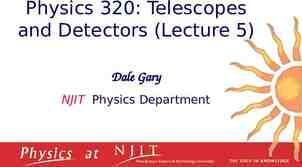(2 August 2002, Kansas) Police said an Olathe man was struck and
38 Slides4.15 MB
(2 August 2002, Kansas) Police said an Olathe man was struck and killed by a train after his vehicle broke down on Interstate 35. His attempts at repairing his car had failed, and he had stepped away from the busy freeway onto the railroad tracks to call for help, when the train engineer spotted him. The engineer said the man was holding a cell phone to one ear, and cupping his hand to the other ear to block the noise of the train. 1
Chapter 6. Benzene and Aromaticity
Aromatic Compounds Aromatic was used to described some fragrant compounds in early 19th century – Not correct: later they are grouped by chemical behavior (unsaturated compounds that undergo substitution rather than addition) Current: distinguished from aliphatic compounds by electronic configuration 3
Sources of Aromatic Hydrocarbons From high temperature distillation of coal tar Heating petroleum at high temperature and pressure over a catalyst 4
Naming Aromatic Compounds Many common names (toluene methylbenzene; aniline aminobenzene) Monosubstituted benzenes systematic names as hydrocarbons with –benzene – C6H5Br bromobenzene – C6H5NO2 nitrobenzene, and C6H5CH2CH2CH3 is propylbenzene 5
Common Names 6
7
The Phenyl Group When a benzene ring is a substituent, the term phenyl is used (for C6H5 ) – You may also see “Ph” or “ ” in place of “C6H5” “Benzyl” refers to “C6H5CH2 ” 8
Disubstituted Benzenes Relative positions on a benzene ring – ortho- (o) on adjacent carbons (1,2) – meta- (m) separated by one carbon (1,3) – para- (p) separated by two carbons (1,4) Describes reaction patterns (“occurs at the para position”) 9
CH3 H3C H3C CH3 ortho-Xylene CH3 CH3 meta-Xylene para-Xylene 10
Naming Benzenes With More Than Two Substituents Choose numbers to get lowest possible values List substituents alphabetically with hyphenated numbers Common names, such as “toluene” can serve as root name 11
Structure and Stability of Benzene Benzene reacts with slowly with Br2 to give bromobenzene (where Br replaces H) This is substitution rather than the rapid addition reaction common to compounds with C C, suggesting that in benzene there is a higher barrier 12
Benzene’s Unusual Structure All its C-C bonds are the same length: 139 pm — between single (154 pm) and double (134 pm) bonds Electron density in all six C-C bonds is identical Structure is planar, hexagonal C–C–C bond angles 120 Each C is sp2 and has a p orbital perpendicular to the plane of the six-membered ring 13
Drawing Benzene and Its Derivatives The two benzene resonance forms can be represented by a single structure with a circle in the center to indicate the equivalence of the carbon–carbon bonds This does indicate the number of electrons in the ring but reminds us of the delocalized structure We shall use one of the resonance structures to represent benzene for ease in keeping track of bonding changes in reactions 14
Bond distances and Bond Angles of Benzene 15
15.4 Molecular Orbital Description of Benzene The 6 p-orbitals combine to give – Three bonding orbitals with 6 electrons, – Two nonbonding and two antibonding orbitals Orbitals with the same energy are degenerate 16
Recall: Key Ideas on Benzene Unusually stable - heat of hydrogenation 150 kJ/mol less negative than a cyclic triene Planar hexagon: bond angles are 120 , carbon–carbon bond lengths 139 pm Undergoes substitution rather than electrophilic addition Resonance hybrid with structure between two line-bond structures One more important factor is the number of electrons in the cyclic orbital 17
Aromaticity and the 4n 2 Rule Huckel’s rule, based on calculations – a planar cyclic molecule with alternating double and single bonds has aromatic stability if it has 4n 2 electrons (n is 0,1,2,3,4) For n 1: 4n 2 6; benzene is stable and the electrons are delocalized 18
Compounds With 4n Electrons Are Not Aromatic (May be Antiaromatic) Planar, cyclic molecules with 4 n electrons are much less stable than expected (anti-aromatic) They will distort out of plane and behave like ordinary alkenes 4- and 8-electron compounds are not delocalized (single and double bonds) Cyclobutadiene is so unstable that it dimerizes by a self-Diels-Alder reaction at low termperature Cyclooctatetraene has four double bonds, reacting with Br2, KMnO4, and HCl as if it were four alkenes cyclooctatetraene 19
Aromatic Ions The 4n 2 rule applies to ions as well as neutral species Both the cyclopentadienyl anion and the cycloheptatrienyl cation are aromatic The key feature of both is that they contain 6 electrons in a ring of continuous p orbitals 20
Aromaticity of the Cyclopentadienyl Anion 1,3-Cyclopentadiene contains conjugated double bonds joined by a CH2 that blocks delocalization Removal of H at the CH2 produces a cyclic 6electron system, which is stable Removal of H- or H generate nonaromatic 4 and 5 electron systems Relatively acidic (pKa 16) because the anion is stable 21
Cycloheptatriene Cycloheptatriene has 3 conjugated double bonds joined by a CH2 Removal of “H-” leaves the cation The cation has 6 electrons and is aromatic 22
15.7 Aromatic Heterocycles: Pyridine and Pyrrole Heterocyclic compounds contain elements other than carbon in a ring, such as N,S,O,P Aromatic compounds can have elements other than carbon in the ring There are many heterocyclic aromatic compounds and many are very common Cyclic compounds that contain only carbon are called carbocycles (not homocycles) Nomenclature is specialized 23
Pyridine, Pyrrole, & Furan 24
Pyridine A six-membered heterocycle with a nitrogen atom in its ring electron structure resembles benzene (6 electrons) The nitrogen lone pair electrons are not part of the aromatic system (perpendicular orbital) Pyridine is a relatively weak base compared to normal amines but protonation does not affect aromaticity 25
Pyrrole A five-membered heterocycle with one nitrogen electron system similar to that of cyclopentadienyl anion Four sp2-hybridized carbons with 4 p orbitals perpendicular to the ring and 4 p electrons Nitrogen atom is sp2-hybridized, and lone pair of electrons occupies a p orbital (6 electrons) Since lone pair electrons are in the aromatic ring, protonation destroys aromaticity, making pyrrole a very weak base 26
15.9 Polycyclic Aromatic Compounds: Naphthalene Aromatic compounds can have rings that share a set of carbon atoms (fused rings) Compounds from fused benzene or aromatic heterocycle rings are themselves aromatic 27
Reactions of Benzene 28
Other Aromatic Substitutions The reaction with bromine involves a mechanism that is similar to many other reactions of benzene with electrophiles The cationic intermediate was first proposed by G. W. Wheland of the University of Chicago and is often called the Wheland intermediate George Willard Wheland 1907-1974 29
Addition Intermediate in Bromination The addition of bromine occurs in two steps In the first step the electrons act as a nucleophile toward Br2 (in a complex with FeBr3) This forms a cationic addition intermediate from benzene and a bromine cation The intermediate is not aromatic and therefore high in energy (see Figure 16.2) 30
Aromatic Nitration The combination of nitric acid and sulfuric acid produces NO2 (nitronium ion) The reaction with benzene produces nitrobenzene 31
Aromatic Sulfonation Substitution of H by SO3 (sulfonation) Reaction with a mixture of sulfuric acid and SO3 Reactive species is sulfur trioxide or its conjugate acid Reaction occurs via Wheland intermediate and is reversible 32
Alkylation of Aromatic Rings: The Friedel– Crafts Reaction Aromatic substitution of a R for H Aluminum chloride promotes the formation of the carbocation 33
Fiedel-Crafts Acylation Reaction of an acid chloride (RCOCl) and an aromatic ring in the presence of AlCl3 introduces acyl group, COR – Benzene with acetyl chloride yields acetophenone 34
Mechanism of Friedel-Crafts Acylation Similar to alkylation Reactive electrophile: resonance-stabilized acyl cation An acyl cation does not rearrange 35
Reactions of Benzene 36
Substituent Effects in Aromatic Rings Substituents can cause a compound to be (much) more or (much) less reactive than benzene Substituents affect the orientation of the reaction – the positional relationship is controlled – ortho- and para-directing activators, ortho- and paradirecting deactivators, and meta-directing deactivators 37
Activators/ Deactivators 38











































